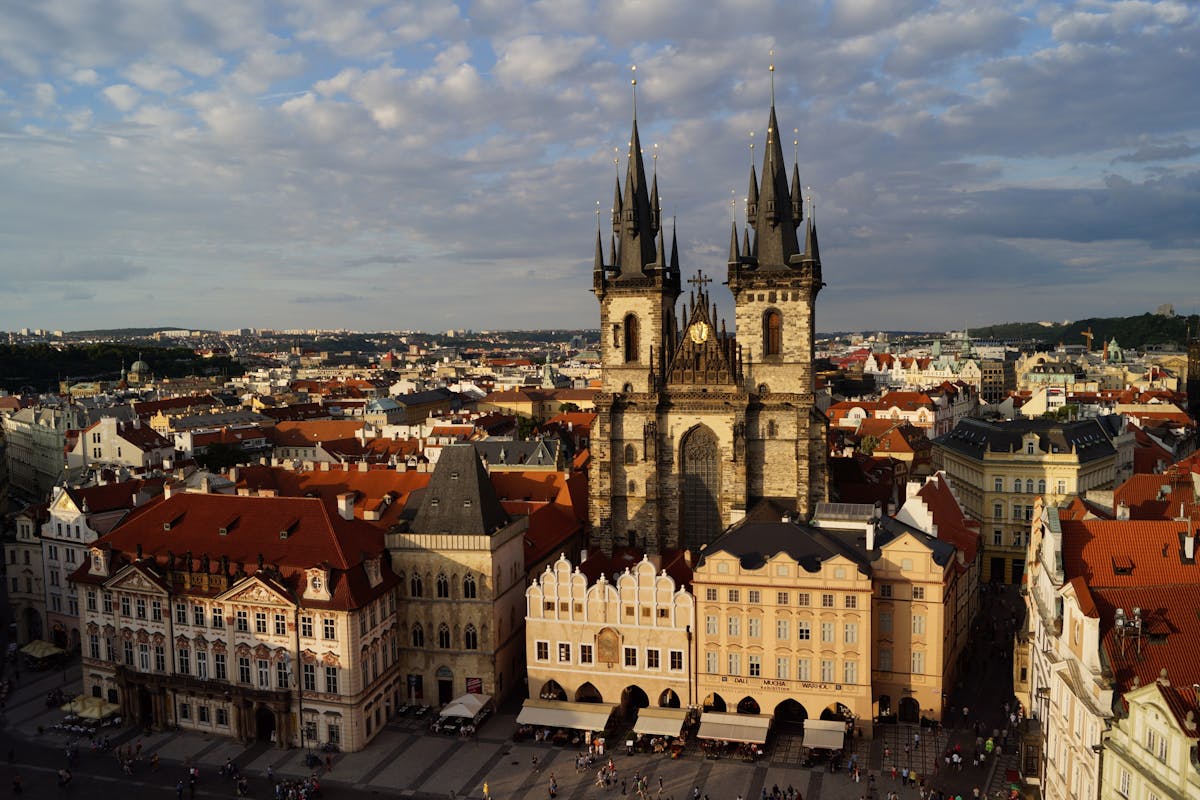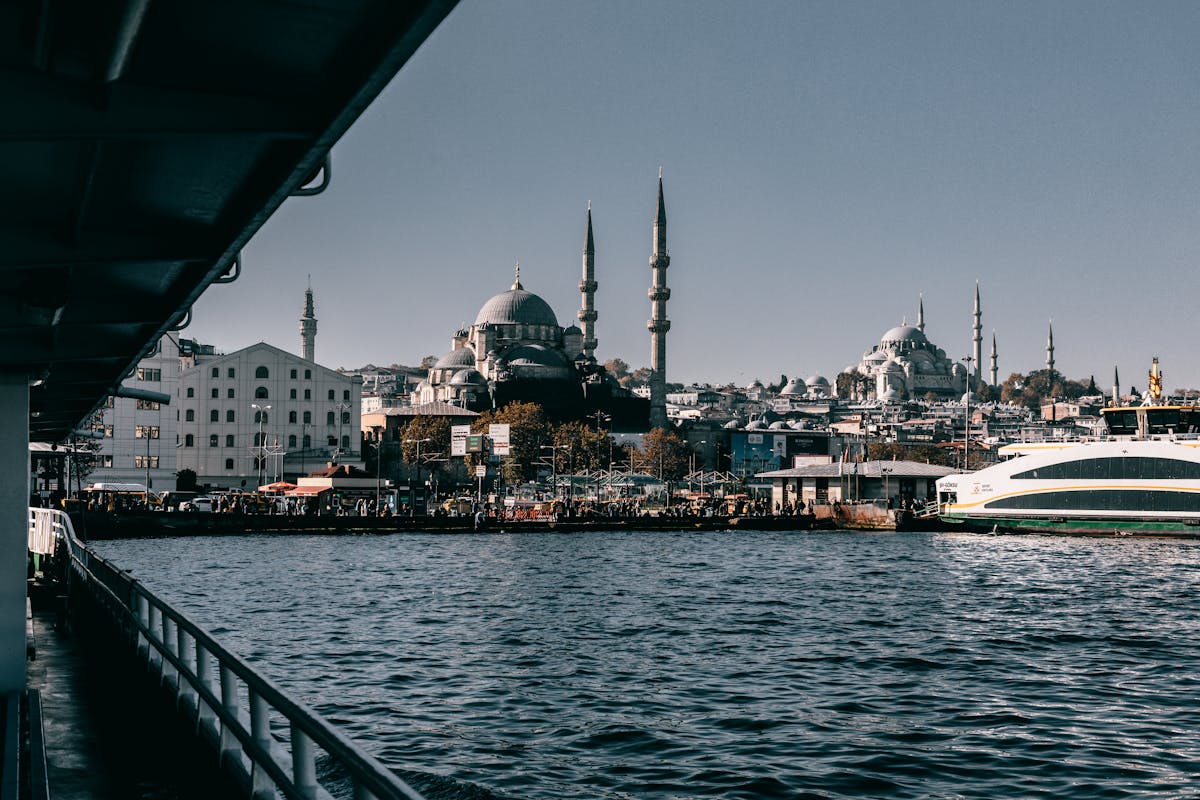
Why Everyone Should Visit Istanbul at Least Once in Their Lifetime
Byzantion, Constantinople, Tsargrad — known by many names throughout history, Istanbul is undoubtedly one of the most beautiful cities in the world — and with over 15 million residents and around 10 million tourists annually, it's a metropolis that truly bustles with life. Located on the Bosphorus Strait between the Black Sea and the Sea of Marmara, Istanbul connects East and West, with one part of the city lying in Europe and the other in Asia. It is the largest city in Turkey.
Istanbul has something for everyone: for those exploring cities to discover new cultures, for experienced travelers, for tourists on a budget, for history lovers, for shopaholics, for foodies and dessert enthusiasts...
Some Useful Information for Touring Istanbul
Istanbul is a city where tourists won’t have trouble getting around. You don’t need a tour guide or an organized tour to explore the city — you can really do everything on your own.
The city is clearly and nicely signposted, so the chances of getting lost are truly minimal. Public transport works almost perfectly — whether you’re traveling by metro, tram, bus, cable car, or ferry, getting from point A to point B is, in most cases, fast and smooth.
If you're staying in the city center, you’ll mostly use the trams, which are modern and clean — and most importantly, you won’t wait more than a few minutes. If you’re planning a Bosphorus cruise, there’s no need to pay more than necessary to a hotel or tour operator — just walk to the dock and choose a tour you like there.
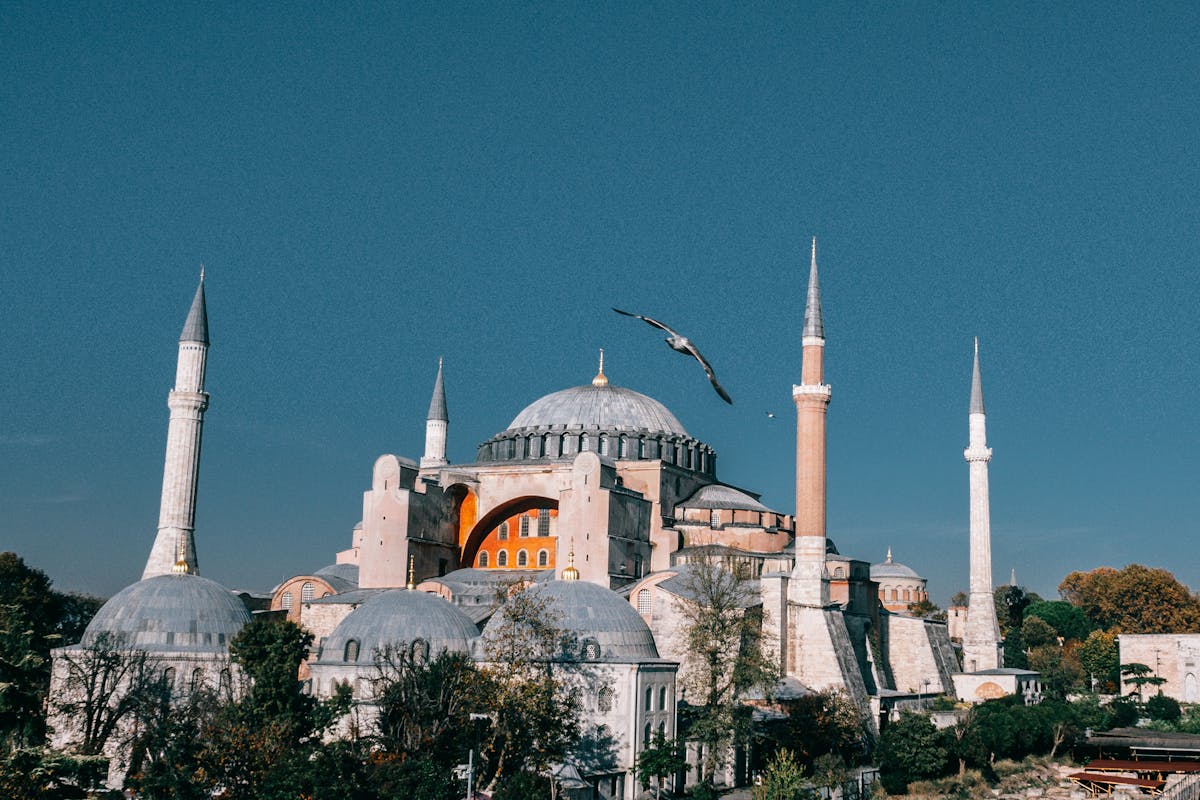
Top 5 Must-See Attractions in Istanbul
Dolmabahçe Palace
The Dolmabahçe Palace, located in the Beşiktaş district of Istanbul on the European shore of the Bosphorus, served as the main administrative center of the Ottoman Empire from 1856 to 1887 and again from 1909 to 1922. It was home to the last six sultans of the dissolved Ottoman Empire.
After the Republic was declared, Dolmabahçe Palace became Ataturk’s presidential palace. It is highly significant for the Turkish nation as it was built during the Ottoman era and later became the Presidential Palace.
Dolmabahçe Palace has 285 rooms, 44 halls, 68 toilets, and 6 Turkish baths. A staggering 14 tons of gold leaf were used to decorate the ceilings. For the interior, 131 handwoven silk carpets were ordered from the city of Hereke to cover the floors of this luxurious palace. The crystal chandelier, gifted by Queen Victoria of England, is the largest in the world, with 750 bulbs and a weight of 4.5 tons.
Photography is not allowed inside this palace, which is considered one of the most impressive in the world. Entry is only allowed through organized tours — independent visits to the interior are not permitted.
The palace is open to visitors on weekdays except Mondays and Thursdays, from 09:00 to 15:00.
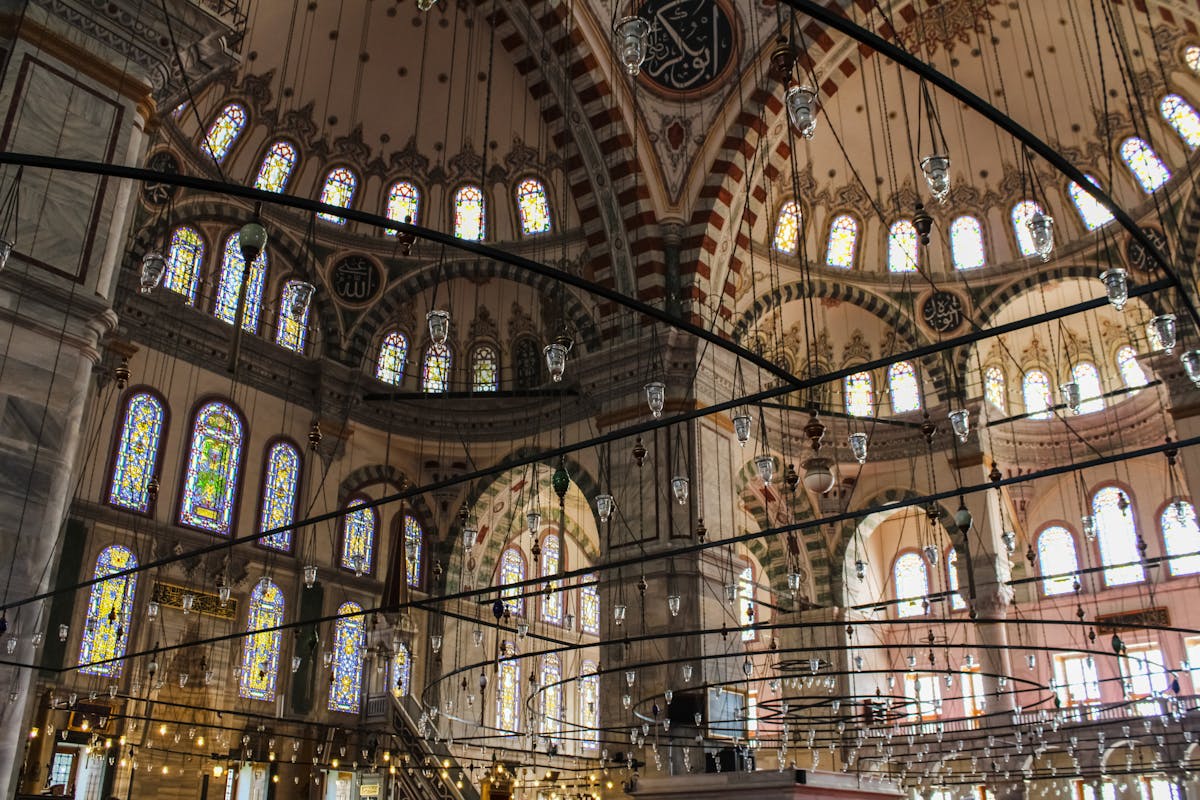
Hagia Sophia
Once the largest cathedral in the world, the Hagia Sophia in Istanbul stood for over 1,500 years along the shores of the Bosphorus Strait and was home to three different religious groups.
Originally built in Constantinople in 360 AD and dedicated by Roman Emperor Constantius II (son of Constantine, the founder of Constantinople), the first wooden Hagia Sophia was burned down during riots in 404. In 415 AD, Emperor Theodosius II ordered the church to be rebuilt, but the Nika revolt in 532 caused massive destruction and the church was destroyed again.
On December 27, 537, Justinian inaugurated the newly built Hagia Sophia, the most important religious structure in his empire. Columns from the long-abandoned Temple of Artemis in Ephesus were used to strengthen and beautify the interior. Other materials may have come from ancient sites in Baalbek and Pergamon. The church, which later became a mosque and remains breathtakingly beautiful, is a stunning example of Byzantine art and architecture.
Remains of the Hippodrome
Right next to the Blue Mosque, in Sultanahmet Square, are the remains of the Hippodrome of Constantinople. After conquering Byzantium in the early 3rd century, Roman Emperor Septimius Severus built many structures in the city, including the Hippodrome.
However, the arena he built was small and unfinished, and it only gained full splendor after Constantine came to power and declared the city the capital of Byzantium.
During the Byzantine Empire, the Hippodrome — which could hold over 40,000 people — was the center of Constantinople’s social life for almost a millennium, hosting chariot races, gladiator games, official ceremonies, celebrations, protests, and more.
But that wasn’t the Hippodrome's only purpose. It was also adorned with artworks brought from across the empire, serving as a display of the empire's wealth and power.
After the fall of Constantinople, the Hippodrome continued to be used — but only as a city square. Unfortunately, during the construction of Ibrahim Pasha’s Palace (now the Museum of Turkish and Islamic Arts) in the 16th century and the Blue Mosque in the 17th century, the arena suffered significant damage. By the 18th century, it was completely abandoned and eventually destroyed.
Today, you can see only remnants of this grand structure — but what remains is enough to help you imagine how the arena once looked.
On the square, you can see the Egyptian Obelisk, brought from the temple in Karnak (present-day Luxor) by Byzantine Emperor Theodosius, the Serpent Column celebrating the Greek victory over the Persians brought from the Temple of Apollo in Delphi, and the Column of Constantine Porphyrogenitus. Additionally, the square features the German Fountain, a gift from Emperor Wilhelm II to Sultan Abdul Hamid II.
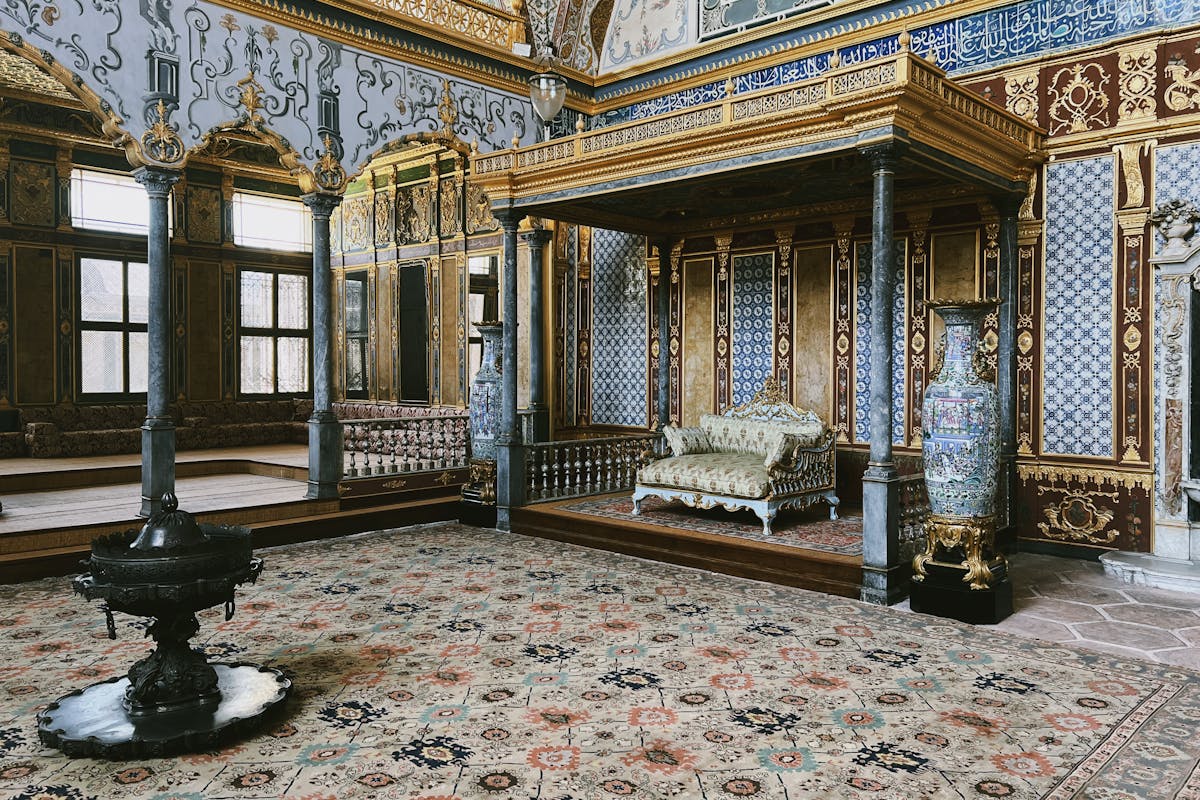
Topkapi Palace
The Topkapi Palace, or Seraglio, is a large museum located in the eastern part of Istanbul’s Fatih district. It was the primary residence of Ottoman sultans for about 400 years of their 624-year reign. It is also the largest and oldest surviving palace in the world. The palace was the heart, brain, and center of the Ottoman Empire. As well as being the sultan’s residence, it was the center of administration and the highest educational institution in the empire. The palace population was usually around 5,000 but could double during festivals.
The palace is located just behind Hagia Sophia and was built on the site of the acropolis of the ancient Greek city of Byzantium. The imperial mint, located in Topkapi Palace, produced Ottoman coins and later coins of the Turkish Republic until 1967.
Up to 300 concubines lived in the palace harem. In the early days, white eunuchs were the guardians of the harem, but later, black eunuchs sent as gifts by the Ottoman governor of Egypt took over. Up to 200 eunuchs lived in the harem. The palace kitchen staff of 1,000 prepared 6,000 meals daily.
When the sultans moved to Dolmabahçe Palace in 1853, Topkapi lost its significance as the official royal residence. Atatürk ordered it to be turned into a museum in 1924.
Blue Mosque
The Sultan Ahmed Mosque, also known as the Blue Mosque, is a stunningly beautiful historical imperial mosque from the Ottoman period, located in Istanbul. This functioning mosque attracts a large number of tourists. It was built between 1609 and 1616 during the reign of Ahmed I. The construction was completed in 1619 by Sedefkâr Mehmet Ağa, a student of Mimar Sinan, the favorite architect of the Ottoman sultans.
The mosque is best known for its six minarets, one large central dome, and eight smaller domes. The Blue Mosque has 260 stained glass windows, and the 20,000 blue tiles that decorate the interior were made in İznik, a region known during the Ottoman Empire for expert tile production. These tiles gave the mosque its name. The architecture is a blend of Ottoman and Byzantine styles.
The Blue Mosque is open every day of the year, but it is closed for 90 minutes during prayer times. Muslims can still enter the mosque outside of prayer times, and visitors are kindly asked to respect prayer times and avoid flash photography.




